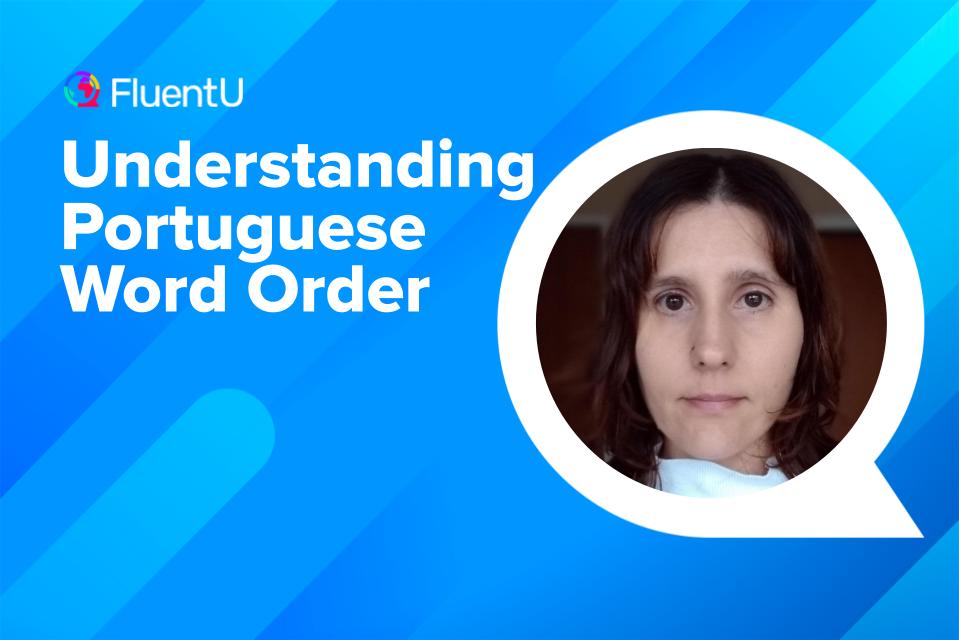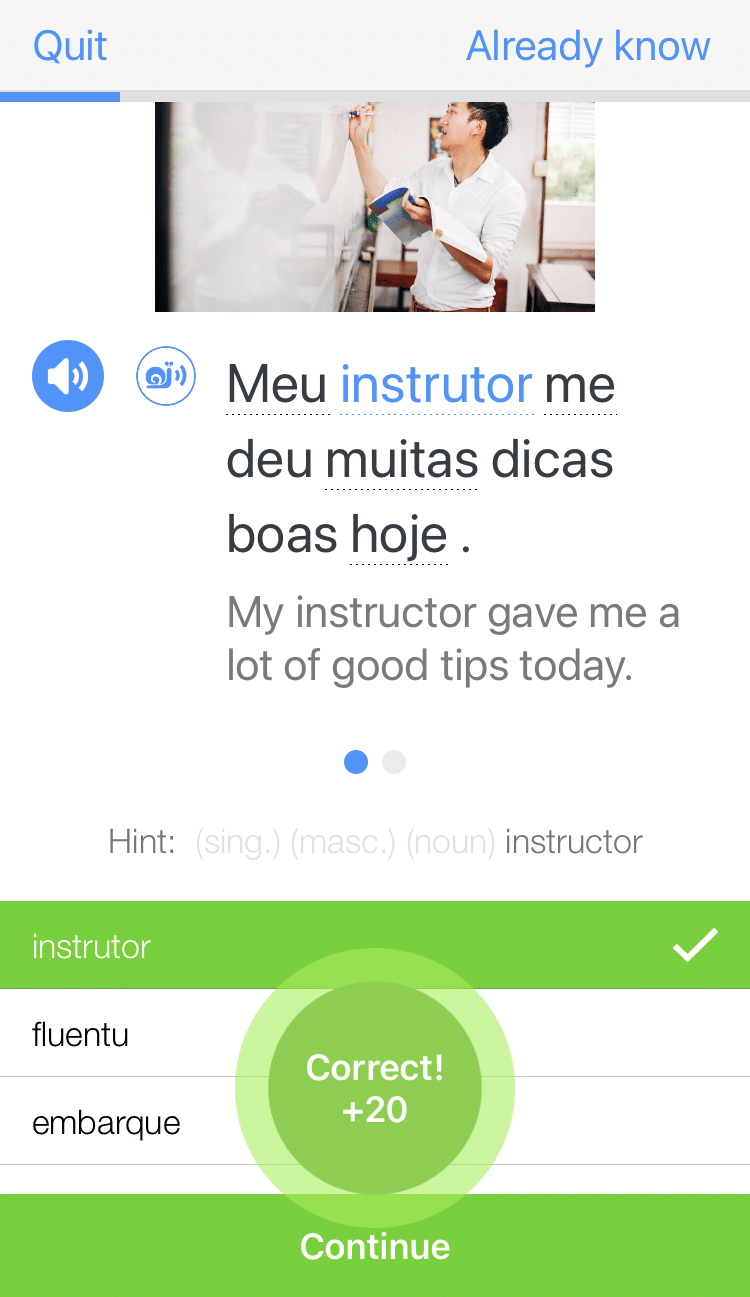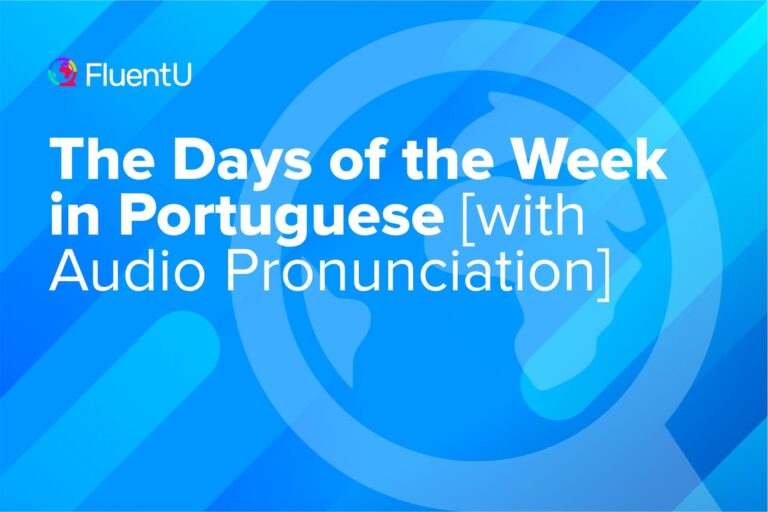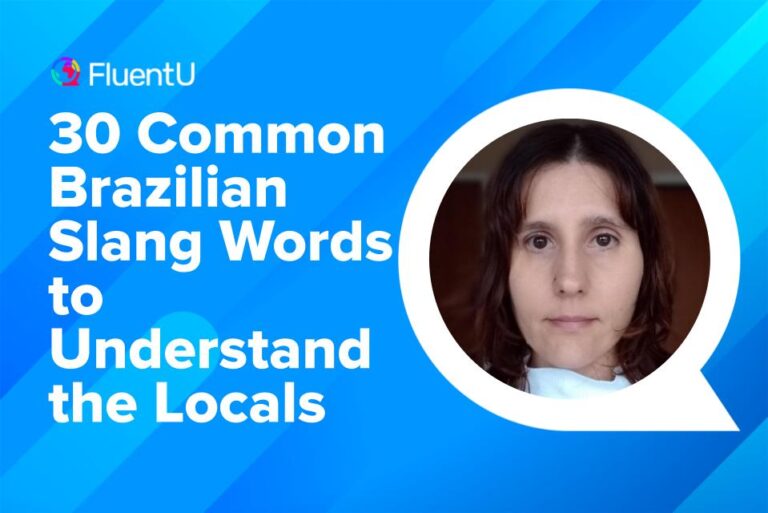Understanding Portuguese Word Order

Placing words into their correct spots in a sentence makes a world of a difference. If you were studying, say, Japanese, you’d have to learn to turn your thinking upside-down to form proper sentences.
But if you’re learning Portuguese and you already know English, you’re in luck: Portuguese and English word order is very similar. Let’s go over exactly how to string all those vocabulary words together in a way that makes sense in the Lusophone world.
Download: This blog post is available as a convenient and portable PDF that you can take anywhere. Click here to get a copy. (Download)
Portuguese Sentence Structure
Like the English language, Portuguese follows what’s known as the subject-verb-object sentence format.
This is exactly what it implies: you state who (the subject) is doing the action (verb) and to what/under what context (object)—in that order.
Here are a few examples that demonstrate this concept more clearly:
Ele comprou um livro. — He bought a book.
In this phrase ele (he) is the subject, comprou (bought) is the verb and um livro (a book) is the object.
Nós fomos ao restaurante. — We went to the restaurant.
Here, nós (we) is the subject, fomos (went) is the verb and ao restaurante (to the restaurant) is the object.
Naturally, there are some subtle grammatical differences between the two languages.
One of the first things to keep in mind is that, unlike English, months, nationalities and days of the week are only capitalized in Portuguese if they appear at the start of the sentence:
Vou te visitar em outubro. — I’ll visit you in October.
Ele é alemão. — He’s German.
Segunda-feira eu volto lá. — (On) Monday I’ll go back there.
You’ll find other little peculiarities as you delve closer into the various phrases you might use on a day-to-day basis—which is exactly what we’re focusing on next.
Portuguese Sentence Types
As previously stated, the best way to make sense of the similarities and differences between English and Portuguese word order is to look at the different types of sentences you’ll be dealing with: statements, questions, negative statements and descriptions.
1. Statements
Statements or assertions are the easiest to get your head around, as this is where the subject-verb-object format is most evident:
Eu vou comprar uma casa. — I’ll buy a house.
Meu vizinho saiu de férias. — My neighbor went on vacation.
See how easily these sentences flow into their subjects and what they’re doing?
Where Portuguese differs from English is in the fact that it’s what linguists call a null subject language. What this means is that it allows for, and sometimes mandates, the omission of certain subjects.
For example, the sentence “I’m going to Paris” can be written in full—Eu vou para Paris—or it can omit the “I” subject—Vou para Paris.
Here’s another example: In Está a chover (European Portuguese) and está chovendo (Brazilian Portuguese)—both of which mean “It’s raining”—the subject is ambiguous, and therefore omitted.
Put it into practice:
Spend some time looking at how the above rules apply to the sentences you’ve stumbled across in your studies. Whenever you’re doing any kind of language practice, have a pen and some paper handy so that you can take note of the different statements that jump at you.
The more relevant you can make this exercise to your learning, the better!
2. Questions
This is one of the biggest differences between Portuguese and English as far as word order goes. But it actually works out in your favor!
While in English, the subject and verb word order needs to be reversed for a question (“He is going home.” → “Is he going home?”), all that differentiates a statement from an indirect question in Portuguese is its intonation.
For instance, the statement Ele é alemão (He’s German) is easily transformed into a question by saying it in an interrogative manner: Ele é alemão? (Is he German?)
Of course, there are instances in English where you might ask a question in the same manner. The difference is, in Portuguese this is the case all the time, whereas in English you’d only apply an inquisitive tone to a statement when you’re double-checking or are incredulous about a fact presented to you: “He’s German? Really!?”
Also note that while in English you need to start your questions with an auxiliary verb, it’s not a requirement in Portuguese:
Elas moram em São Paulo? — Do they (feminine) live in São Paulo?
You do, however, need to add your standard question words—who (quem), what (o que), when (onde), where (quando), how (como), why (por que)—to direct questions, just as you would in English:
Quando é a reunião? — When’s the meeting?
Onde fica o restaurante? — Where’s the restaurant?
Quem é ele? — Who’s he?
Como você sabe? — How do you know?
Be extra careful when dealing with “why” and “because” as they’re quite easy to get mixed up:
Por que você faltou da escola? — Why did you miss school? (Por que — Why)
Porque eu estava doente. — Because I was sick. (Porque — Because)
Put it into practice:
This is where you get to test your listening and speaking skills. Keep your ears peeled for any questions that come up on your favorite podcasts, audiobooks, movies and other listening tools—and repeat them out loud so that you’re also working on your own intonation.
You can also practice with this grammar breakdown of a “Two and a Half Men” clip from our YouTube channel:
3. Negative Statements
In order to make a sentence negative, you simply need to add a negating word before the verb.
Negative words that typically precede Portuguese verbs are não (no, don’t or not, depending on context), nunca (never), and nem (nor). Jamais (never ever) might also be used on the odd occasion:
Eu não tenho ideia. — I have no idea.
Não faça isso. — Don’t do this.
Ele não é muito simpático. — He’s not very friendly.
Eu nunca comi caviar. — I’ve never eaten caviar.
Ela não quer sair. — She doesn’t want to go out.
(Nós) jamais esqueceremos disso. — (We) will never forget this. (This is one of those sentences where you can omit the “we” subject if you wish.)
Não vi, nem quero ver. — I neither saw (it), nor do I want to. (And this is an example which mandates the subject to be omitted.)
Put it into practice:
Now’s the time to focus on your writing skills. First up, grab your pen and notebook and start crafting some positive statements. Then, convert them into negative sentences.
Along with fine-tuning your knowledge of grammar rules, this’ll add some much-needed spelling practice into the mix.
4. Descriptive Statements
Now we get into adjective placement.
This is one of those areas you’ll want to spend some time working on, as it’ll go against some of the standard conventions you’re used to.
In English, describing words come before the noun; in Portuguese, adjectives follow the nouns they modify.
If you’re describing a red car, for instance, you need to invert your word order: um carro vermelho (carro — car, vermelho — red). Taking things literally, you’re saying “car red” instead of a “red car.”
The same rule applies to size, shape and other descriptors:
Ela mora em uma casa grande. — She lives in a big house. (casa — house, grande — big)
(Eu) Tenho cinco maçãs maduras. — I have three ripe apples. (maçãs — apples, maduras — ripe)
(Eu) Comprei um computador novo. — I bought a new computer. (computador — computer, novo — new)
We get that this probably sounds unnatural right now. But constructing descriptive sentences will get easier once you get used to the reversed order of things.
Put it into practice:
Let’s mix things up a little.
Start by analyzing the various adjectives that emerge in your favorite study resources, Portuguese language apps, visual tools and audio aides. For this step, you should focus on how each describing word is used alongside questions as well as negative and positive statements.
Once you’ve done that, you can start building your own descriptive sentences—statements, questions, anything goes! It may be that you need to revisit some of the previous rules to do this. But in the end, the more creative you can be in your approach, the more memorable the experience will be.
That’s all there is to it! We hope our study tips will help you hone your Portuguese sentence-building skills so that you, too, can construct your own path toward fluency.
Download: This blog post is available as a convenient and portable PDF that you can take anywhere. Click here to get a copy. (Download)
And One More Thing...
If you're like me and enjoy learning Portuguese through movies and other media, you should check out FluentU. With FluentU, you can turn any subtitled content on YouTube or Netflix into an engaging language lesson.
I also love that FluentU has a huge library of videos picked specifically for Portuguese learners. No more searching for good content—it's all in one place!

One of my favorite features is the interactive captions. You can tap on any word to see an image, definition, and examples, which makes it so much easier to understand and remember.
And if you're worried about forgetting new words, FluentU has you covered. You'll complete fun exercises to reinforce vocabulary and be reminded when it’s time to review, so you actually retain what you’ve learned.
You can use FluentU on your computer or tablet, or download the app from the App Store or Google Play. Click here to take advantage of our current sale! (Expires at the end of this month.)








